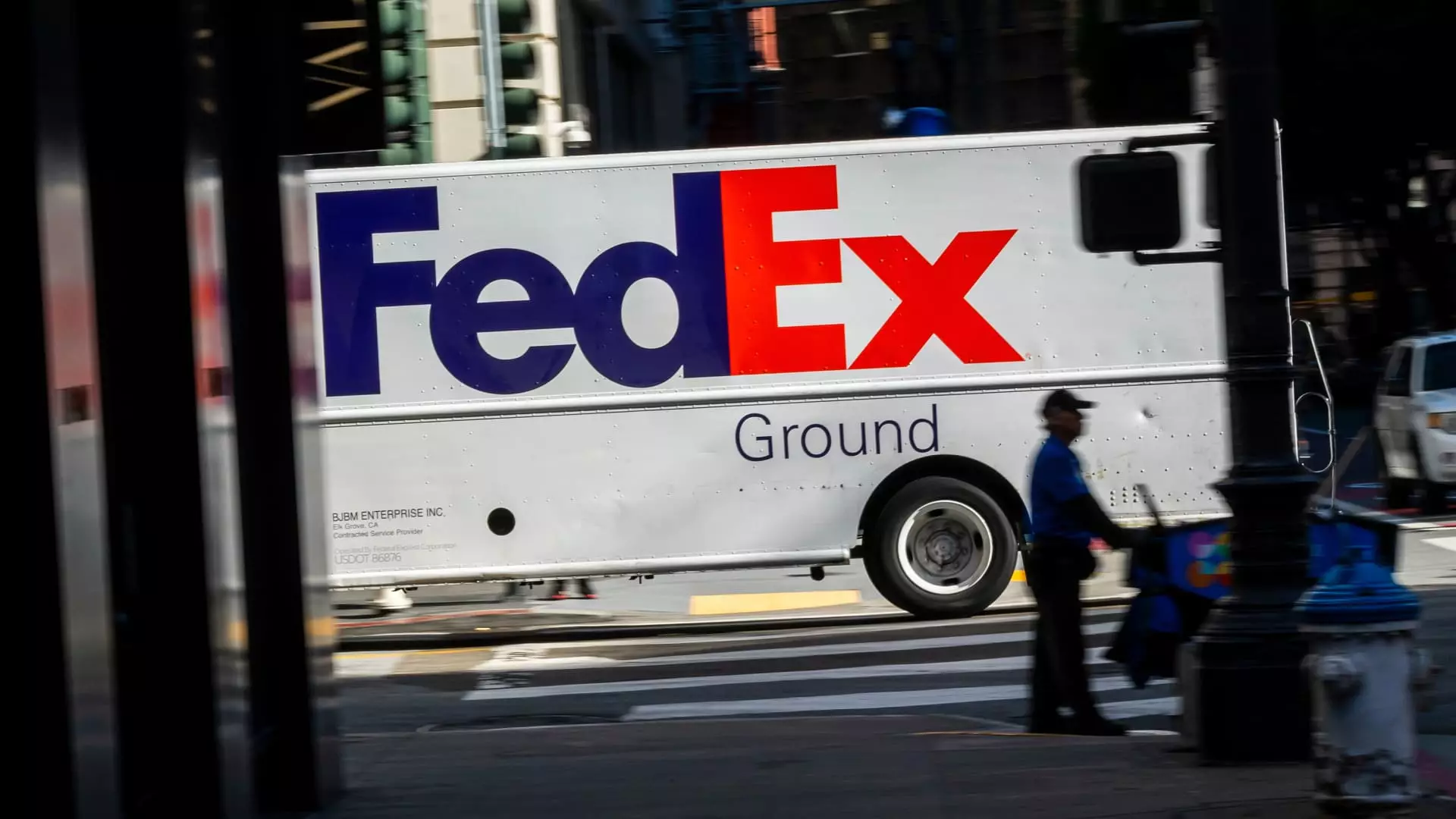FedEx’s recent earnings report illustrates both the company’s resilience and the grim economic scenarios shaping the logistics industry. Despite achieving a remarkable $4 billion in cost reductions—a feat that CEO Raj Subramaniam proudly highlighted—it’s crucial to recognize the broader implications of the data unveiled during this financial disclosure. While the company surpassed Wall Street’s expectations in earnings per share and revenue, the drop in stock prices post-announcement indicates a troubling disconnection between the numbers and investors’ perceptions. The stock plummeted approximately 5% after-hours, signaling a market that is not yet convinced the turnaround efforts are robust enough to offset ongoing operational challenges.
Furthermore, the year-to-date decline of over 18% in FedEx stock suggests that investor confidence is fragile at best, reflecting a climate of uncertainty that should not be ignored. This disconnect may stem from the company’s cautious guidance for the upcoming fiscal quarter, which modestly predicts revenue growth but falls short in profit projections. The investors’ skepticism is valid, and it beckons deeper analysis into FedEx’s long-term strategy amid fluctuating market demands.
Cost-Cutting or Catalyst for Growth?
The substantial cost-cutting measures announced by FedEx prompt an essential question: Is cost reduction a sustainable growth strategy, or a temporary fix? While achieving the $4 billion cost-cutting goal showcases effective management, it also raises concerns about what sacrifices were made in the process. For a logistics titan like FedEx, focusing excessively on trimming costs may inadvertently stifle innovation and hinder long-term growth prospects. The DRIVE program—designed to enhance profitability through operational efficiency—could lay the groundwork for future growth, but it equally risks becoming a myopic strategy if not complemented by investments that enhance service quality and customer experience.
Skeptics might argue that while short-term savings can appease Wall Street, they can also dilute the brand’s ability to serve its clients effectively. True competitiveness in the logistics sector demands a balance; cost-cutting must be harmonized with improvements in service delivery to foster trust and reliability.
The Shadow of Global Economic Challenges
The looming specter of global economic volatility continues to cast shadows over FedEx and similar logistics operators. The anticipated $170 million headwind from international exports underscores the direct impact of global trade policies, particularly concerning U.S.-China relations. The ramifications of such foreign economic entanglements should not be disregarded; they could redefine operational landscapes across multiple sectors. FedEx’s reliance on seamless international trade is a double-edged sword—while it enables expansive market reach, it also exposes the company to unpredictable regulatory changes.
With the looming uncertainties surrounding global trade, FedEx must be vigilant and nimble in response to shifts in international commerce, especially those tied to freight volume and shipping costs. Adhering to a reactive model can prove detrimental, and proactive measures—such as diversifying logistic routes and partners—are necessary for navigating turbulent waters.
Paving the Path After Fred Smith’s Legacy
The recent passing of Fred Smith, FedEx’s founder and executive chairman, marks an era of transformation for the company. Smith’s vision has been integral to FedEx’s identity; his absence challenges the new leadership to uphold his legacy while charting a new course. The anticipated spin-off of the Freight division could serve as a pivotal moment, allowing FedEx to operate with a more focused strategy. This significant separation from its Freight division may optimize efficiencies but could also lead to increased pressure for the core FedEx brand to redefine itself independently.
Investors will be watching closely to see whether Subramaniam’s leadership can maintain the momentum built under Smith while integrating new strategies that resonate with contemporary market demands. Transition periods are fraught with risks, but they can also present unique opportunities for innovation and realignment.
The Investor’s Dilemma
For investors, the crossroads FedEx finds itself at presents a dilemma: should one cling to a brand known for its historical strength in logistics, or pivot toward emerging competitors that promise new service models? The company must rise to the occasion and emerge from its current challenges, demonstrating that its recent achievements are more than mere band-aids on a larger wound. Only time will tell if FedEx can successfully convert its operational adjustments into enduring value, paving the way for what could potentially be a transformative chapter in its storied history.

